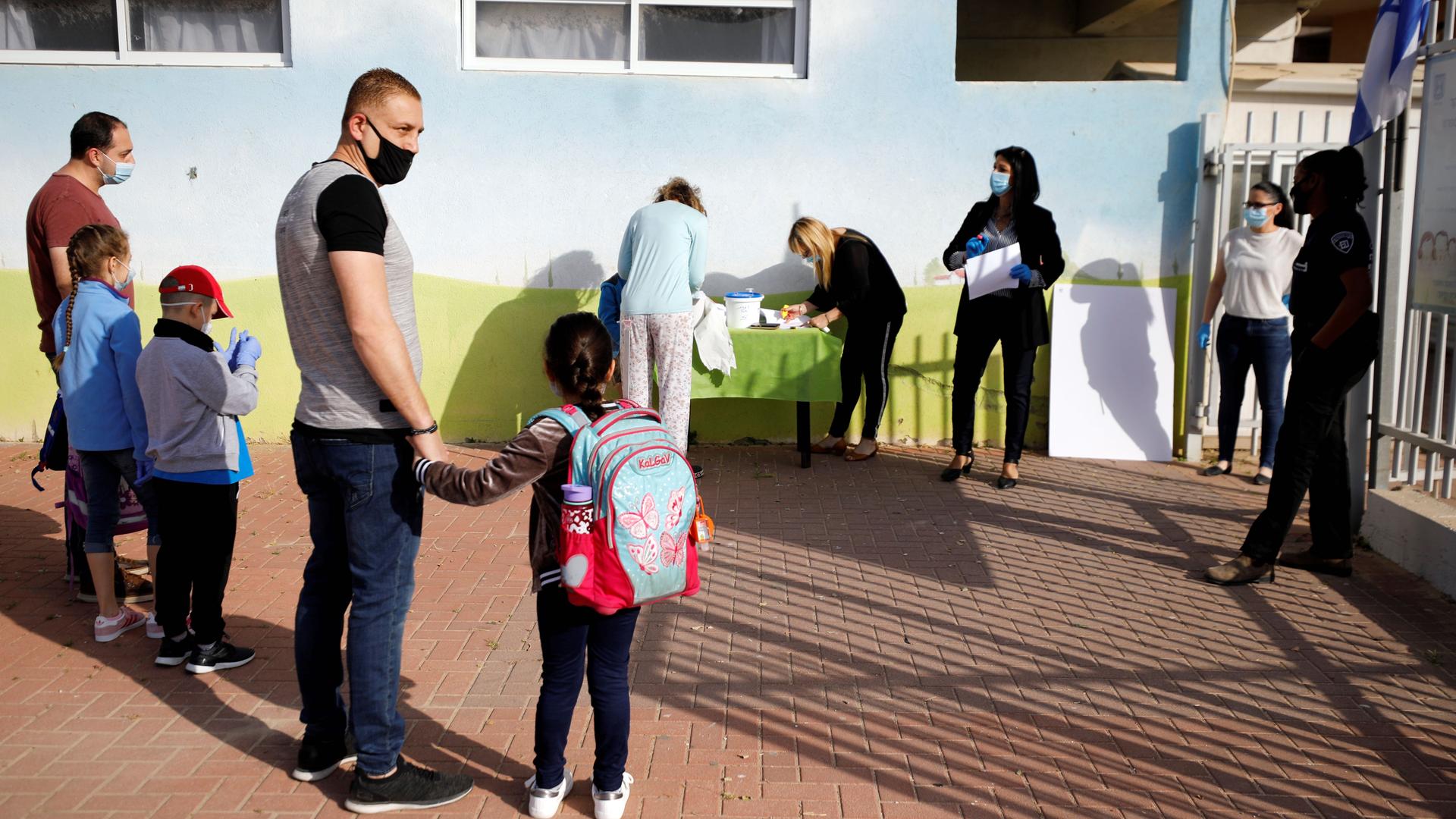Israel’s hurried school reopenings serve as a cautionary tale
By the first day back to school in early May, Lisa Namdar-Kaufman, a mother of two from the Israeli town of Pardes Chana, sensed that proper precautions against spreading the coronavirus were being ignored.
“They did all types of bonding exercises with the kids, all kinds of climbing around each other without their masks on, and climbing over and underneath one another without the masks on.”
“Photographs were sent to us from a sixth-grade class at the end of the day to show us, ‘Look how much fun it is to be back in school,’” she said. “They did all types of bonding exercises with the kids, all kinds of climbing around each other without their masks on, and climbing over and underneath one another without the masks on.”
That’s not all: “They made a board with nails to hang their masks on, one on top of the other,” she said. “I was furious and frightened, frankly.”
As schools around the world plan for the fall semester, many are looking to Israel — where COVID-19 outbreaks swept through the educational system after a hurried reopening — as an example of what could go wrong.
Related: Israel considers a second lockdown as coronavirus cases surge
But in early May, Israel had one of the lowest rates of the coronavirus in the world. New cases had dropped to the low double digits per day, and fewer than 250 people had died from the virus across the country. After months of largely adhering to strict lockdown measures, the Israeli public patted itself on the back for a job well done and prepared to return to normal life.
When schools began to reopen in early May, a handful of grades were sent to class in small groups, or “capsules,” to minimize the possibility of the coronavirus outbreaks. In a surprise move, the government then announced that all grades would return and lifted restrictions on class sizes.
Rebecca Nussbaum, a teacher in a Jerusalem high school, said she and her colleagues had only a single weekend to prepare for the wave of new students.
“To everybody’s surprise in the school, the Thursday night before we were going back on the Sunday, we were in a staff meeting about how capsules would work; it was 9 o’clock at night and a news report came out saying that schools were opening as normal.”
“To everybody’s surprise in the school, the Thursday night before we were going back on the Sunday, we were in a staff meeting about how capsules would work; it was 9:00 at night, and a news report came out saying that schools were opening as normal.”
Nussbaum continued, “We did not feel like we had any adequate time to prepare for that, in order to make sure the school was appropriately equipped for that many students coming back in one go.”
Related: West Bank annexation would make Israel an ‘international outlaw’
The coronavirus rapidly spread through the school system. Tens of thousands of students were sent into quarantine as their classmates tested positive.
The first and most significant outbreak was at the storied Gymnasia Rehavia, a middle and high school in Jerusalem. There, 116 students and 14 teachers were infected. Alumni of the school include politicians, authors and prominent public figures in Israeli society.
The Education Ministry released a complex set of requirements and recommendations to prevent spreading the coronavirus, but it was largely up to the discretion of individual principals and teachers how to enforce these rules.
Namdar-Kaufman empathized with educators, saying that the instructions being handed down were simply unrealistic.
Related: Isolation may be a greater risk than COVID-19 for residents of Canada’s nursing homes
“The kind of social distancing they were asking for was just impossible with the resources at hand. So, because they received a list — the teacher said it was a very long and convoluted list of recommendations, requirements — the message was, ‘We know you can’t do this, so do whatever.’ That it wasn’t serious, and they didn’t take it seriously as a result, and so then each teacher went with whatever they felt comfortable with.”
Looking ahead, both Nussbaum and Namdar-Kaufman are more optimistic about the fall semester. The summer offers teachers and staff the opportunity to do much more extensive preparation.
“I think that with clear guidelines, and sufficient time to prepare the schools physically and teachers, it could be more successful. But I think keeping students in smaller groups is better educationally and more beneficial health-wise.”
“I think that with clear guidelines, and sufficient time to prepare the schools physically and teachers, it could be more successful. But I think keeping students in smaller groups is better educationally and more beneficial health-wise,” Nussbaum said.
Related: The pandemic has disrupted how we grieve. The effects could be long-lasting.
Most schools do not have the infrastructure to give each capsule its own classroom, meaning that students will likely have some mix of in-person and remote learning in the coming semester.
Some critics have claimed that school reopening caused the second wave of the coronavirus that has spread across the country. In recent weeks, Israel has had more than 1,500 new cases per day. But Yohanan Plesner, a former member of parliament and current head of The Israel Democracy Institute, doesn’t think the evidence is clear enough to make that assertion.
“The common wisdom that the single one decision that made a difference in terms of gatherings was when, in June, it was permitted to open up events, weddings, so on. To allow for events to up to 250 people, and some events were much larger,” he said. “So, rather than the school system, if there was one decision that we could go back and unwind, it would be the decision about allowing for large events to take place.”
